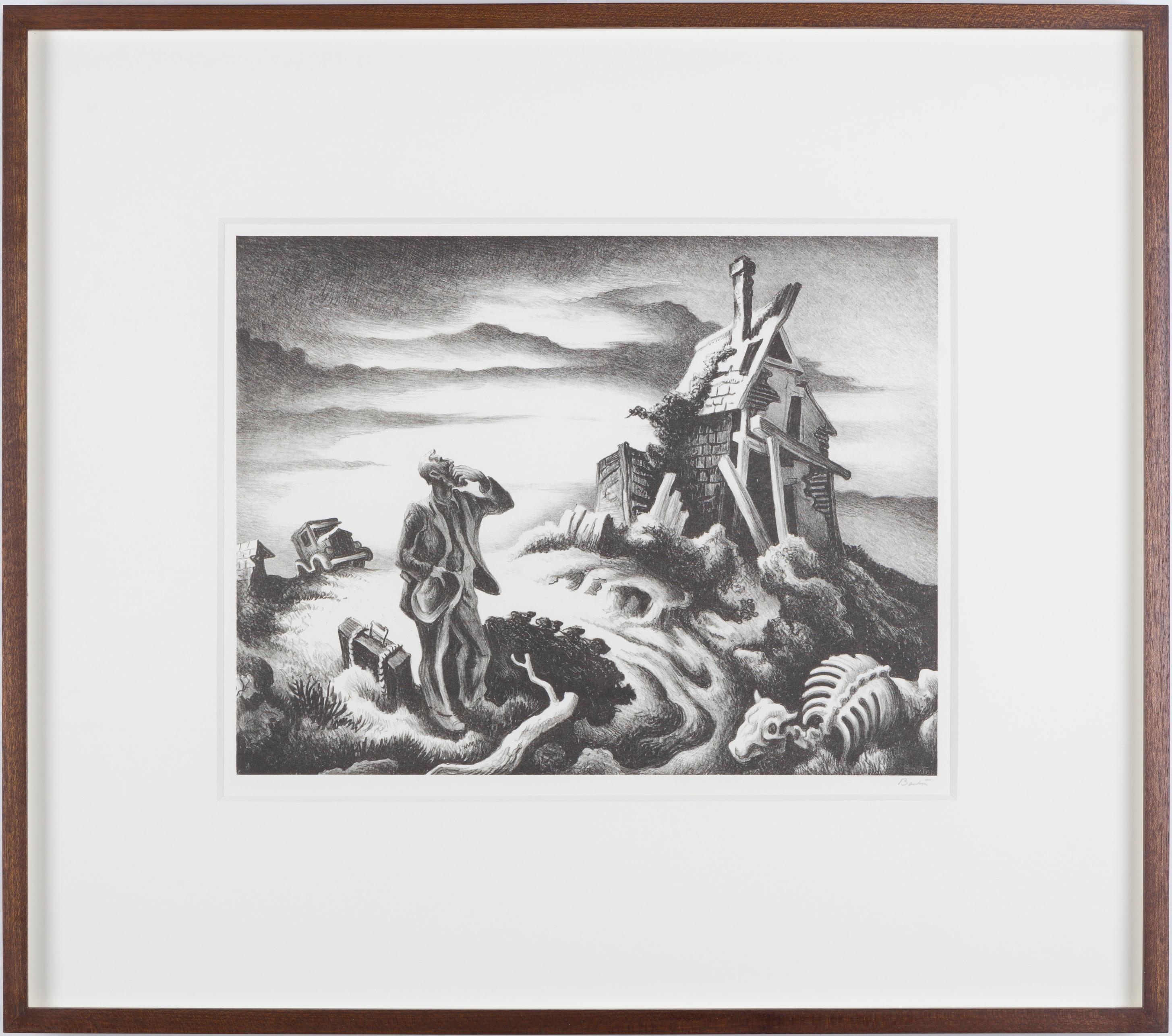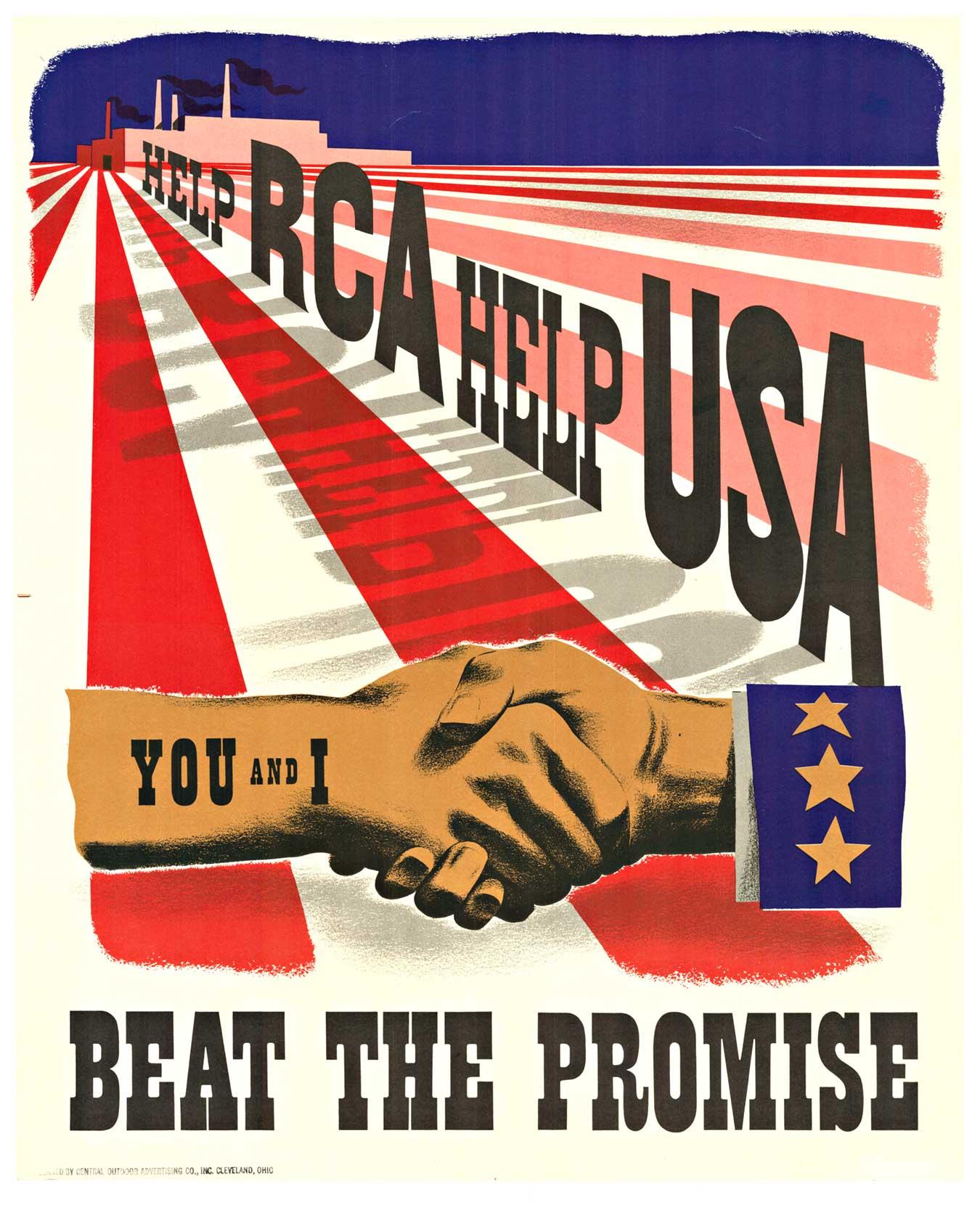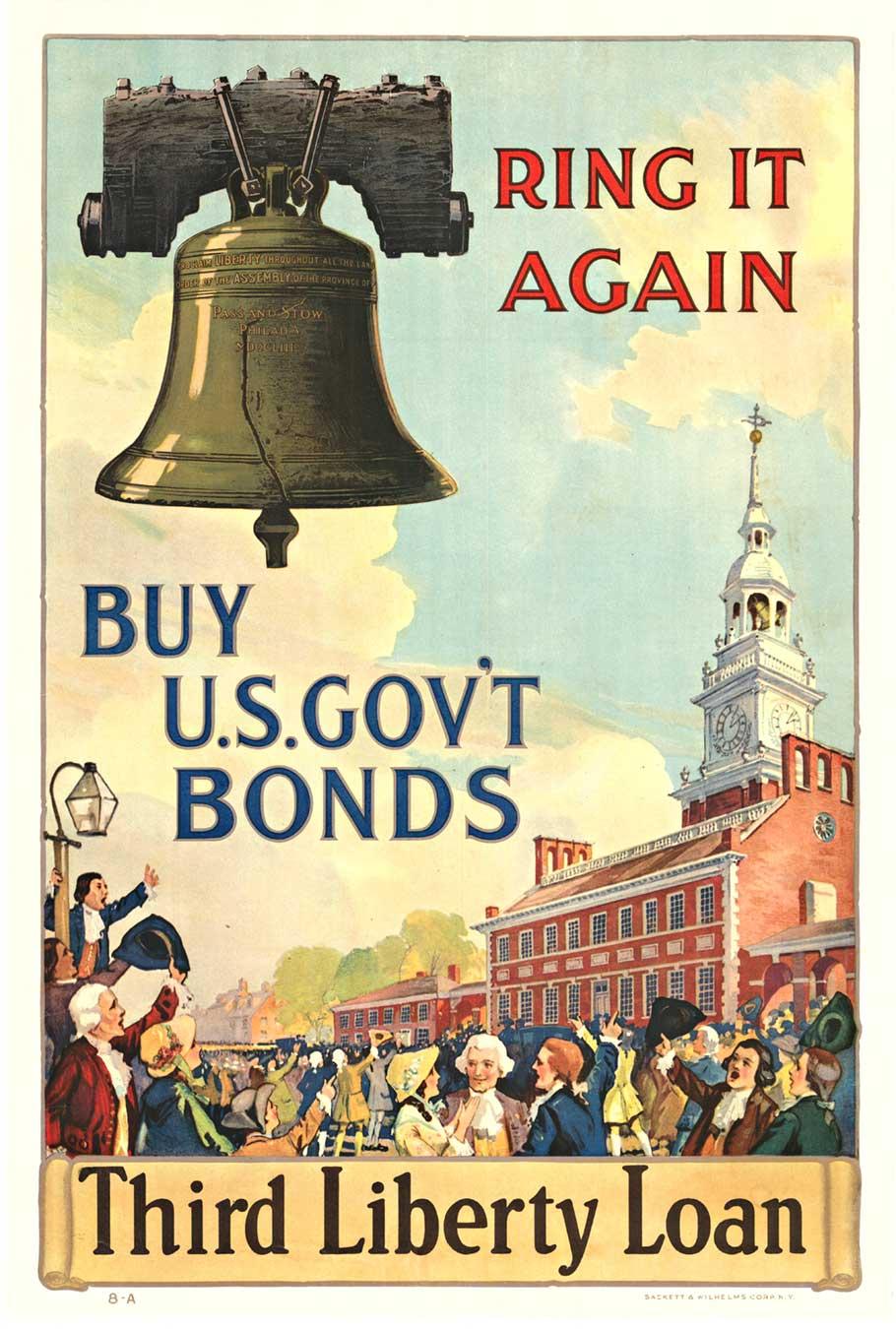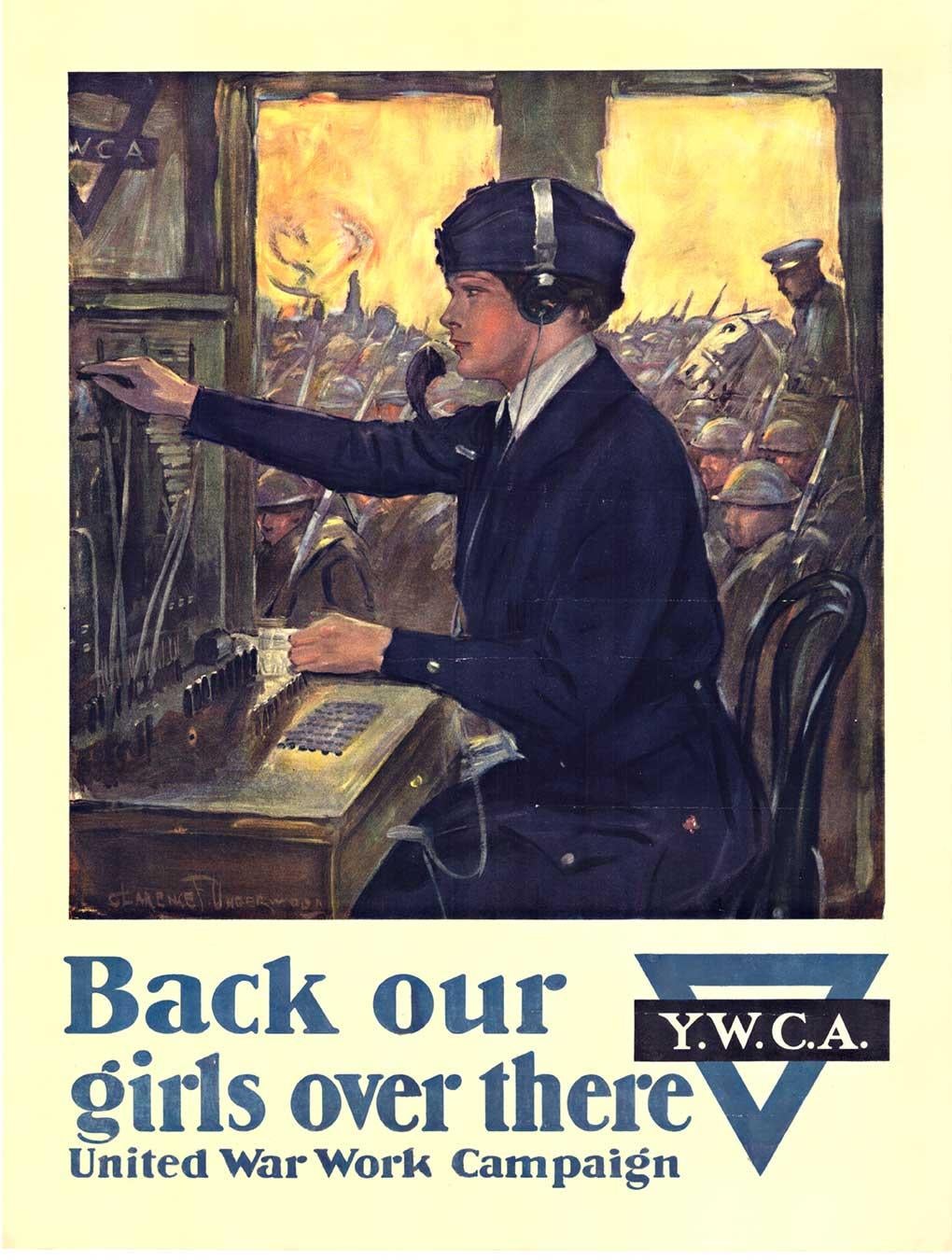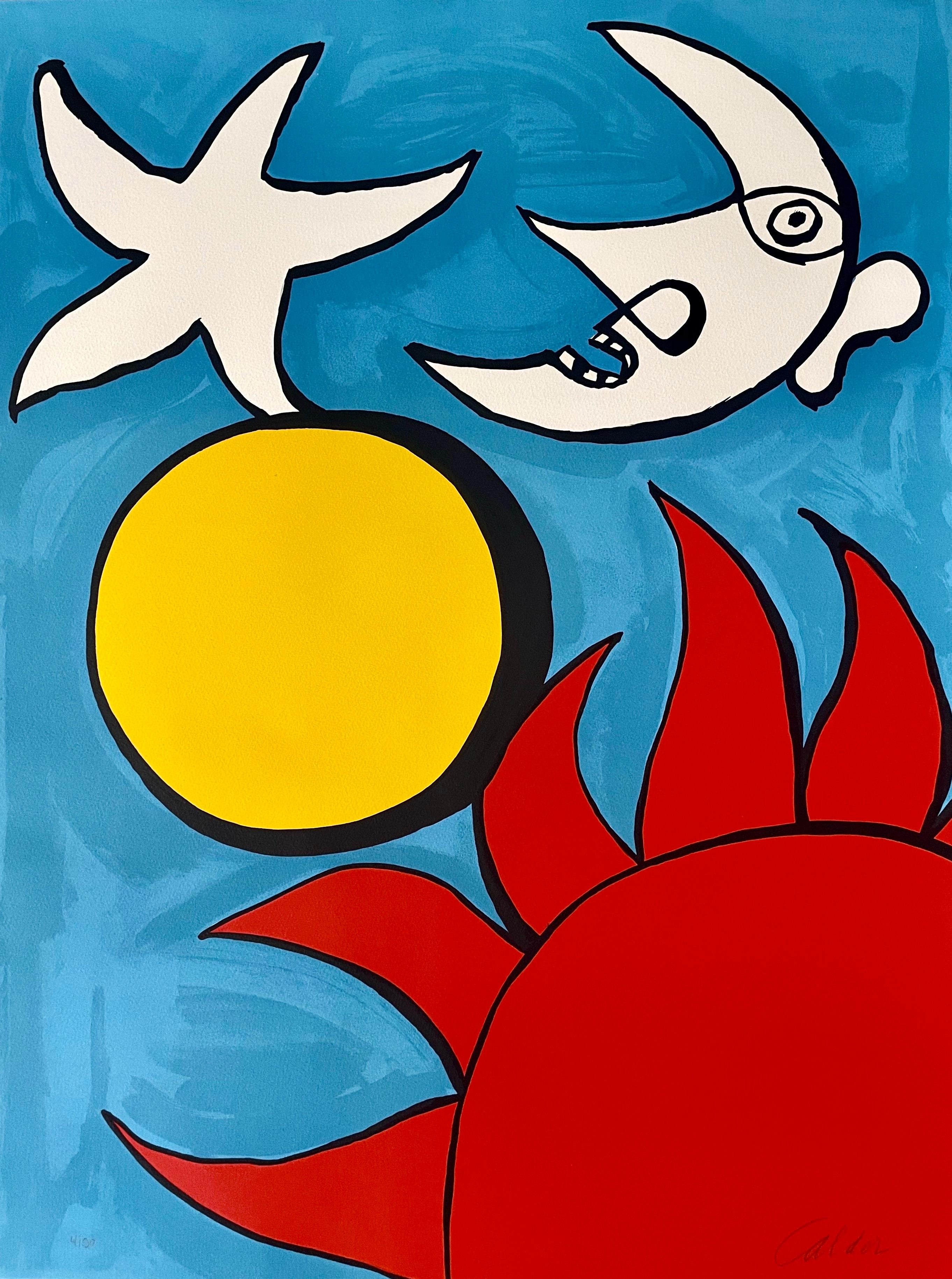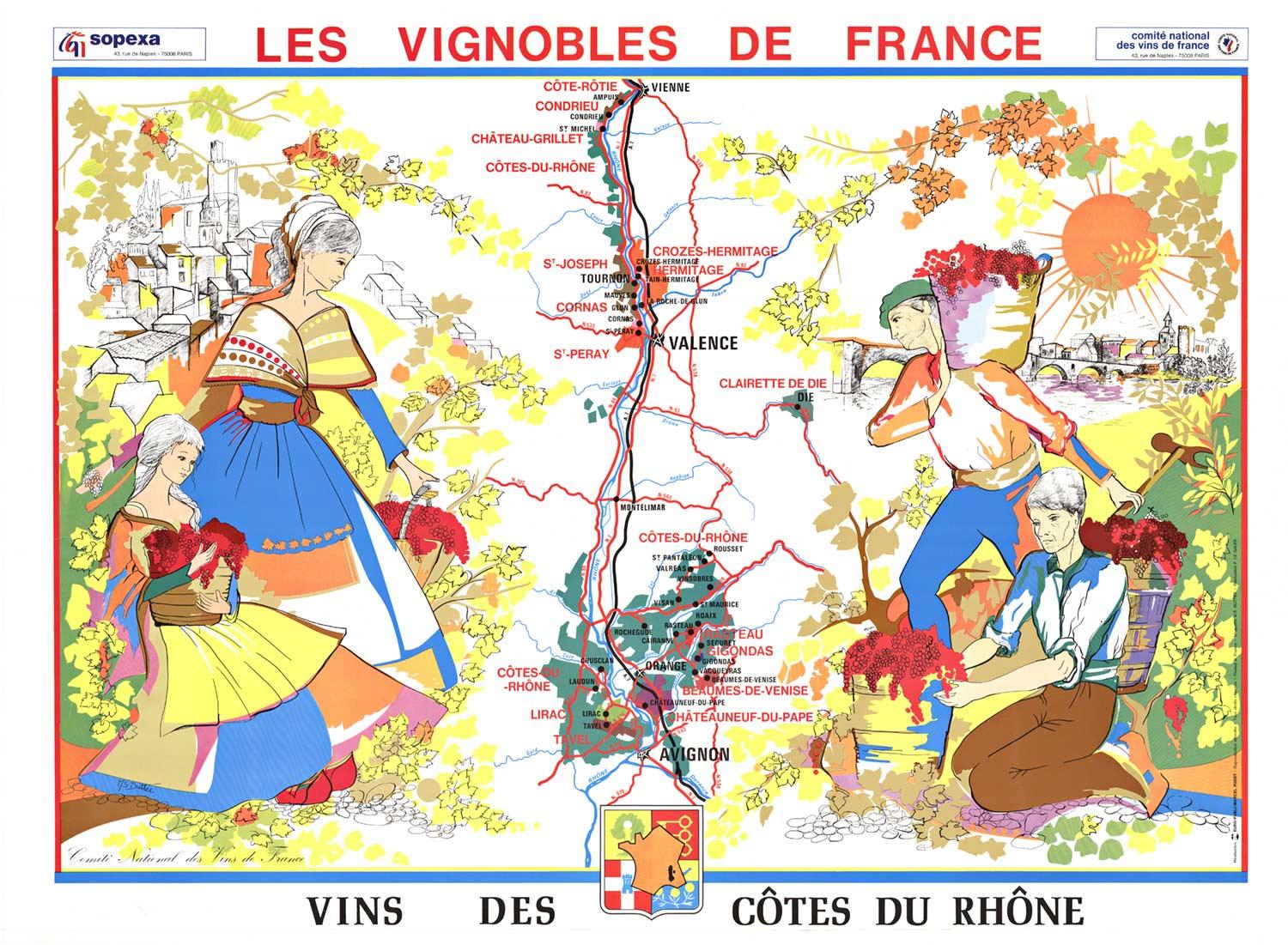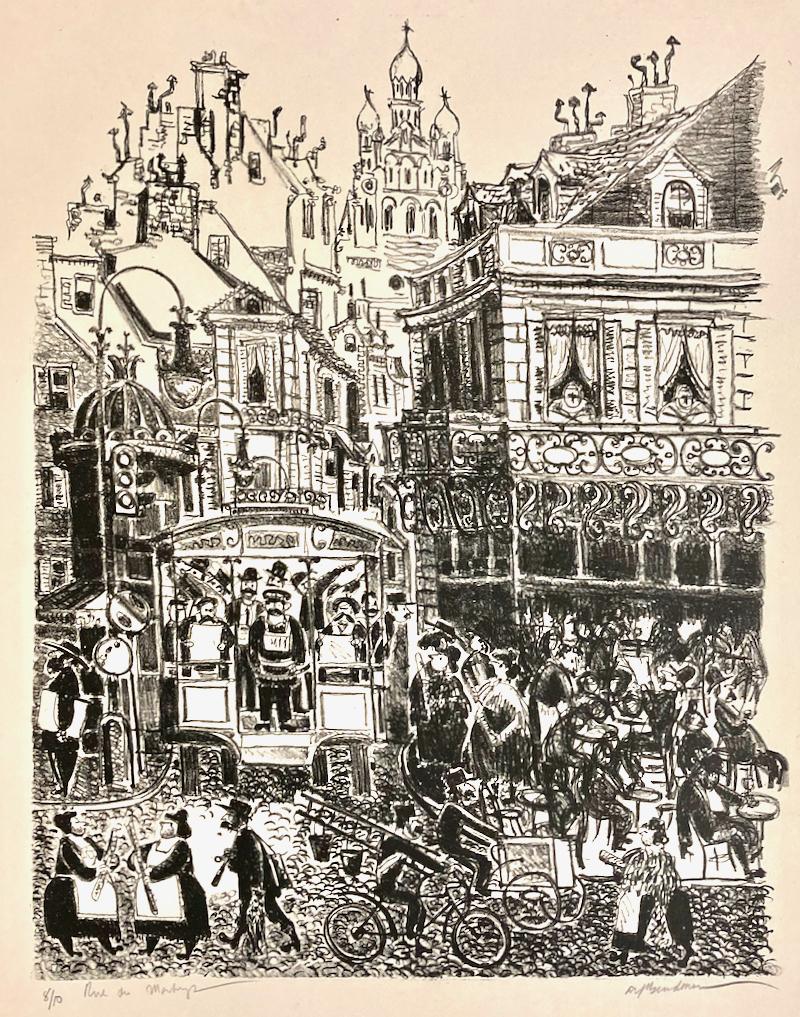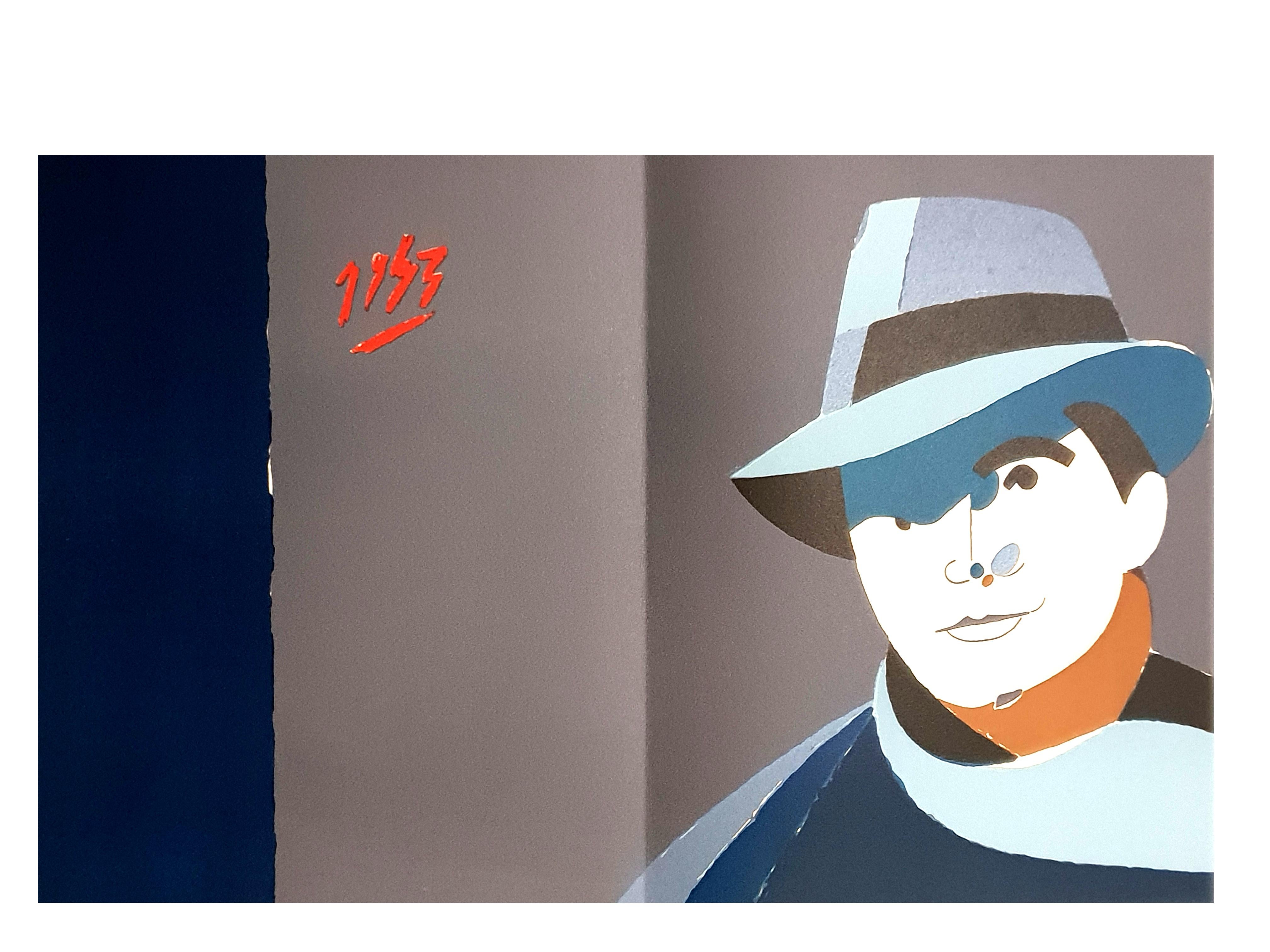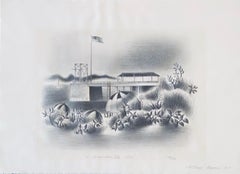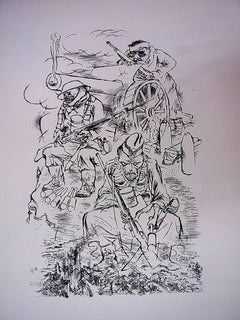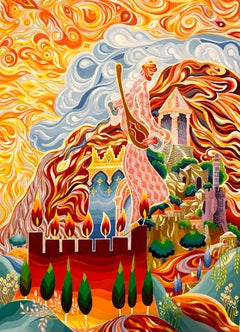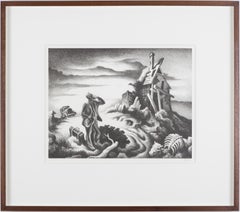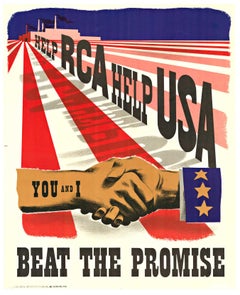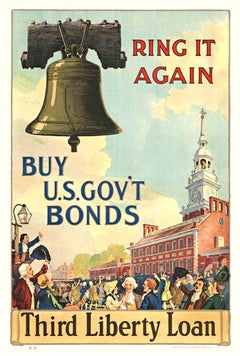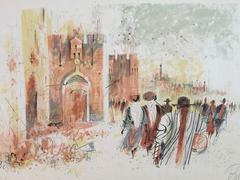
Old City Jerusalem
View Similar Items
Want more images or videos?
Request additional images or videos from the seller
1 of 6
Shmuel KatzOld City Jerusalem
About the Item
- Creator:Shmuel Katz (1926 - 2010, Austrian, Israeli)
- Dimensions:Height: 19.5 in (49.53 cm)Width: 27.5 in (69.85 cm)
- Medium:
- Movement & Style:
- Period:
- Condition:Minor creases.
- Gallery Location:Surfside, FL
- Reference Number:1stDibs: LU382751372
About the Seller
4.9
Platinum Seller
These expertly vetted sellers are 1stDibs' most experienced sellers and are rated highest by our customers.
Established in 1995
1stDibs seller since 2014
1,549 sales on 1stDibs
Typical response time: 1 hour
More From This SellerView All
- Simka Simkhovitch WPA Artist Lithograph Island Beach 1933 American ModernistBy Simka SimkhovitchLocated in Surfside, FLSimka Simkhovitch (Russian/American 1893 - 1949) signed lithograph. Pencil signed and dated "S. Simkhovitch 1933" lower center. Title "Island Beach," in pencil lower left of sheet. Numbered "44/50" in pencil lower right. (it is either Island Beach Wisconsin or New Jersey) Simka Simkhovitch (Симха Файбусович Симхович) (aka Simka Faibusovich Simkhovich) (Novozybkov, Russia May 21, 1885 O.S./June 2, 1885 N.S.—Greenwich, Connecticut February 25, 1949) was a Ukrainian-Russian Jewish artist and immigrant to the United States. He painted theater scenery in his early career and then had several showings in galleries in New York City. Winning Works Progress Administration (WPA) commissions in the 1930s, he completed murals for the post offices in Jackson, Mississippi and Beaufort, North Carolina. His works are in the permanent collections of the Dallas Museum of Art, the National Museum of American Art and the Whitney Museum of American Art. Born outside Kyiv (Petrograd Ukraine) into a Jewish family who owned a small department store. During a severe case of measles when he was seven, Simcha Simchovitch sketched the views outside his window and decided to become an artist, over his father's objections. Beginning in 1905, he studied at the Grekov Odessa Art School and upon completion of his studies in 1911 received a recommendation to be admitted to the Imperial Academy of Arts. Though he enrolled to begin classes in architecture, painting, and sculpture at the Imperial Academy, he was dropped from the school roster in December because of the quota on the number of Jewish students and drafted into the army. Simchovitch served as a private in the 175th Infantry Regiment Baturyn [ru] until his demobilization in 1912. Re-enrolling in the Imperial Academy, he audited classes. Simka Simkhovitch exhibited paintings and sculptures in 1918 as part of an exhibition of Jewish artists and in 1919 placed 1st in the competition "The Great Russian Revolution" with a painting called "Russian Revolution" which was hung in the State Museum of Revolution. In 1922, Simkha Simkhovitch exhibited at the International Book Fair in Florence (Italian: Fiera Internazionale del Libro di Firenze). In 1924, Simkhovitch came to the United States to make illustrations for Soviet textbooks and decided to immigrate instead. Initially he supported himself by doing commercial art and a few portrait commissions. In 1927, he was hired to paint a screen for a scene in the play "The Command to Love" by Fritz Gottwald and Rudolph Lothar which was playing at the Longacre Theatre on Broadway. Art dealers began clamoring for the screen and Simkhovitch began a career as a screen painter for the theater. Catching the attention of the screenwriter, Ernest Pascal, he worked as an illustrator for Pascal, who then introduced him to gallery owner, Marie Sterner. Simkhovitch's works appeared at the Marie Sterner Gallery beginning with a 1927 exhibit and were repeated the following year. Simkhovitch had an exhibit in 1929 at Sterner's on circus paintings. In 1931, he held a showing of works at the Helen Hackett Gallery, in New York City and later that same year he was one of the featured artists of a special exhibit in San Francisco at the California Palace of the Legion of Honor in Lincoln Park. The exhibit was coordinated by Marie Sterner and included four watercolors, including one titled "Nudes". He is of the generation of Russian Soviet artists such as Isaac Pailes, Serge Charchoune, Marc Chagall, Chana Orloff, Isaac Ilyich Levitan, and Ossip Zadkine. In 1936, Simkhovitch was selected to complete the mural for the WPA Post office project in Jackson, Mississippi. The mural was hung in the post office and courthouse in 1938 depicted a plantation theme. Painted on the wall behind the judge’s bench, “Pursuits of Life in Mississippi”, a depiction of black workers engaged in manual labor amid scenes of white professionals and socialites, was eventually covered over in later years during renovations due to its stereotypical African American imagery. The following year, his painting "Holiday" won praise at an exhibition in Lincoln, Nebraska. In 1940, Simkhovitch's second WPA post office project was completed when four murals, "The Cape Lookout Lighthouse and the Orville W. Mail Boat", "The Wreck of the Crissie Wright", "Sand Ponies" and "Canada Geese" were installed in Beaufort, North Carolina. The works were commissioned in 1938 and did not generate the controversy that the Jackson mural had. The main mural is "The Wreck of the Crissie Wright" and depicts a shipwreck which had occurred in Beaufort in 1866. "The Cape Lookout Lighthouse and the Orville W. Mail Boat" depicted the lighthouse built in 1859 and the mail boat that was running mail during the time which Simkhovitch was there. The boat ran mail for the area until 1957. "Sand Ponies" shows the wild horses common to the North Carolina barrier islands and "Canada Geese" showed the importance of hunting and fishing in the area. All four murals were restored in the 1990s by Elisabeth Speight, daughter of two other WPA muralists, Francis Speight...Category
1930s American Modern Landscape Prints
MaterialsLithograph
- 1936 Lithograph Soldiers in battle World War I small editionBy George GroszLocated in Surfside, FLAccording to the frontis these were produced by Hand Lithography. According to the Museum of Modern Art (MOMA NY) website "Edition:300 announced; only approx. 42 issued (including regular edition of 30, deluxe edition of approx. 10, and 2 artist's proofs)" I believe these are from the deluxe edition as they are on Mould made BFK Rives French paper and the dimensions are larger than stated in the MOMA website. the sheet size here is 40X29 cm. Date 1936. Publisher:Black Sun Press, New York. Printer:George C. Miller & Son, New York. most of them are plate signed. George Grosz (July 26, 1893 – July 6, 1959) was a German artist known especially for his Satire and Caricature drawings of Berlin life in the 1920s. He was a prominent member of the Berlin Dada and New Objectivity group during the Weimar Republic before he emigrated to the United States in 1933. He studied at the Dresden Academy of Fine Arts, where his teachers were Richard Müller, Robert Sterl, and Oskar Schindler. He subsequently studied at the Berlin College of Arts and Crafts under Emil Orlik. Grosz left the Communist Party KPD in 1922 after having spent five months in Russia and meeting Lenin and Trotsky, because of his antagonism to any form of dictatorial authority. Along with Otto Dix, he is widely considered one of the most important artists of the Neue Sachlichkeit. Bitterly anti Nazi, Grosz left Germany shortly before Hitler came to power. In June 1932, he accepted an invitation to teach the summer semester at the Art Students League of New York. In October 1932, Grosz returned to Germany, but on January 12, 1933 he and his family emigrated to America. In 1946 he published his autobiography, A Little Yes and a Big No. In the 1950s he opened a private art school at his home and also worked as Artist in Residence at the Des Moines Art Center. Grosz was elected into the National Academy of Design as an Associate Academician in 1950. In 1954 he was elected to the American Academy of Arts and Letters. Grosz worked in a style influenced by Expressionism and Futurism, as well as by popular illustration, graffiti, and children's drawings.The City (1916–17) was the first of his many paintings of the modern urban scene. Other examples include the apocalyptic Explosion (1917), Metropolis (1917), and The Funeral, a 1918 painting depicting a mad funeral procession. In his drawings, usually in pen and ink which he sometimes developed further with watercolor, Grosz did much to create the image most have of Berlin and the Weimar Republic in the 1920s. Corpulent businessmen, wounded soldiers, prostitutes, sex crimes and orgies were his great subjects His draftsmanship was excellent although the works for which he is best known adopt a deliberately crude form of caricature. His oeuvre includes a few absurdist works, and also includes a number of erotic artworks. ("Ecce Homo" which saw him accused of pornography) My Drawings expressed my despair, hate and disillusionment, I drew drunkards; puking men; men with clenched fists cursing at the moon. ... I drew a man, face filled with fright, washing blood from his hands ... I drew lonely little men fleeing madly through empty streets. I drew a cross-section of tenement house: through one window could be seen a man attacking his wife; through another, two people making love; from a third hung a suicide with body covered by swarming flies. I drew soldiers without noses; war cripples with crustacean-like steel arms; two medical soldiers putting a violent infantryman into a strait-jacket made of a horse blanket ... I drew a skeleton...Category
1930s Landscape Prints
MaterialsLithograph
- Large Colorful Jerusalem Israeli Judaica Surrealist Lithograph on Heavy PaperBy Baruch NachshonLocated in Surfside, FLTHis is a fabulous, Surrealist lithograph in bright fauvist colors by Hasidic mystic Boruch Nachshon It depicts jerusalem with King David and a menorah in a Jerusalem Landscape. Bar...Category
20th Century Surrealist Figurative Prints
MaterialsLithograph
- Japanese Woodblock Artist French Lithograph Fauvist Colors School of ParisBy Shungo SekiguchiLocated in Surfside, FLShungo Sekiguchi, (Japanese, 1911-2002): Lithograph in color on Rives paper Hand signed in pencil lower right, hand numbered It appears to be the village of Montmarte in Paris This was published by the Guilde de la Gravure, Paris, France and bears their GG blindstamp. They were a mid century French art publisher and published many masters including Raoul Dufy, Max Erns, Jean Hans Arp, Ruffino Tamayo, Balthus, Gino Severini and Leonard Tsuguharu Foujita. Shungo Sekiguchi was born 1911 in Japan. In 1932 Shungo Sekiguchi contributed to the print series "One Hundred Views of Great Tokyo" (Dai Tokyo hyakkei). Prints from watercolors published by Kaneda Shoten (Nihon Hanga Ken-kyusho). In 1935, Sekiguchi moved to Paris, France to study at the prestigious Ecole des Beaux Art of France with a scholarship of the French government. He studied together with two other Ecole de Paris Japanese artists, Takanori Ogisu and Tsuguji Foujita. He exhibited at the prestigious "Salon d'Automne" in Paris. In 1940 when Paris was occupied by the German Nazis, Shungo Sekiguchi returned to Japan, but kept his ties with France. In 1952 he exhibited at the famous Salon d'Automne and received an award. In 1959, he received an award at the Vicci International Art Contest. In 1964, he received the Diplome d'Honneur des at Jobiji International Art Show. His retrospective exhibition has been held in many places in Japan. In 2002 the artist died in Japan. He is popular in Japan and several retrospective exhibitions were held in Japan. He was part of the Shin Hanga and Sosaku Hanga woodblock artists known for their woodcut prints and scrolls. Shin-hanga was an art movement in early 20th-century Japan, during the Taisho and Showa periods, that revitalized traditional ukiyo-e art rooted in the Edo and Meiji periods. He also worked as a book illustrator and did the artwork for the French edition of Le démon doré by Ozaki Kohyo. He is included in Helen Merritt and Nanako Yamada's classic book "Guide to Modern Japanese Woodblock...Category
1950s Post-Impressionist Landscape Prints
MaterialsLithograph
- Israeli Folk Art Hebrew Naive Judaica Lithograph Jewish Holiday ShavuotBy Shalom MoskovitzLocated in Surfside, FLVintage pencil signed and numbered limited edition lithograph on deckle edged Arches paper. Shalom of Sefad (Shulem der Zeigermacher in Yiddish Shalom Moskowitz) Shalom of Tzfat liv...Category
20th Century Folk Art Figurative Prints
MaterialsLithograph
- 1970 Silencio, Direccion Unica, One Way Spanish Political Etching Pop Art PrintBy Juan GenovesLocated in Surfside, FLJuan Genovés Candel (Spanish, 1930-) Painter, illustrator, and graphic printmaker engraver. He painted 'El abrazo' ('the embrace'), which became an emblematic poster during the Spanish political transition. He was born in Valencia in 1930. The son of Juan Genovés Cubells, an artisan whose family was close to the labor movement. His mother Maria Candel Muñoz came from a family of practicing Catholics. In 1946 Genovés studied at the Escuela de Bellas Artes de San Carlos in Valencia and then settled in Madrid. He set up the 'Los Siete' group together with other artists in 1949, and the following year he travelled to Madrid, where he was influenced by the works by Fra Angélico and Hieronymus Bosch in the Prado Museum. In 1957 he had his first solo exhibitions in the gallery Alfil, Madrid and in the Museo d'Arte Moderna, Havana. He is considered the most important representative of modern Spanish painting. His images, executed in a politically engaged, critical realism...Category
1970s Pop Art Figurative Prints
MaterialsLithograph
You May Also Like
- Prodigal SonBy Thomas Hart BentonLocated in London, GBA fine impression with full margins published by Associated American Artists with their information label present - pictured in Art and Popular Religion in Evangelical America, 1815-...Category
1930s American Modern Landscape Prints
MaterialsLithograph
- Original 'Help RCA help USA, You and I Beat the Promise" vintage WWII posterLocated in Spokane, WA‘Help RCA Help USA, Beat the Promise, You and I Beat the Promise,’ original WWII antique vintage military poster. In the foreground are two clasped hand...Category
1940s American Modern Figurative Prints
MaterialsLithograph
- Original "Ring It Again, Third Liberty Loan vintage WW1 posterLocated in Spokane, WAOriginal poster: Ring it Again Third Liberty Loan. Buy U. S. Gov't Bonds. World War 1 lithograph poster over 100 years old. It is mounted on acid-free archival linen. It looks l...Category
1920s American Modern Figurative Prints
MaterialsLithograph
- Original "Back Our Girls Over There, YWCA vintage WW1 posterBy Clarence UnderwoodLocated in Spokane, WAOriginal Back Our Girls Over There Y.W.C.A. WW1 antique poster: Linen-backed original Beautiful Y.W.C.A. Telephone operator sitting at the control pane...Category
1910s American Modern Figurative Prints
MaterialsLithograph
- Original "Sint-Truiden Carnaval!" vintage festival posterLocated in Spokane, WAOriginal 1959 “Sint-Truiden Carnaval!” vintage lithograph poster. Archivally linen backed in very good condition, ready to frame. No paper loss, no tears, no stains. Excellent gr...Category
1950s Modern Figurative Prints
MaterialsLithograph
- Potpourri en CielBy Alexander CalderLocated in Fairfield, CTArtist: Alexander Calder (1898-1976) Title: Potpourri en Ciel Year: 1975 Medium: Lithograph in colors on wove paper Edition: 90, plus proofs Size: 29...Category
1970s Modern Figurative Prints
MaterialsLithograph
$10,000 Sale Price20% Off
